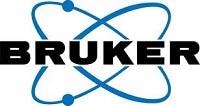Matrix-assisted laser deposition ionization (MALDI) is a “soft”, low-fragmentation ionization technique employed in mass spectrometry. The key advantage of MALDI is that it is capable of measuring a large number of compounds rapidly without damaging the sample.
Recording the mass spectrum when the sample is moved in two dimensions enables thousands of compounds within a tissue sample to be identified and mapped onto an image. This process is known as MALDI imaging.
MALDI imaging is employed for a variety of applications in the pharmaceutical industry, of which only a few applications are discussed in this article.

Applications
Measuring Drug Distribution
The distribution of drugs in pharmaceutical samples has to be measured with utmost care to ensure that the sample has the right concentration of the drug to be effective. If the drug distribution is too low or too high, the pharmaceutical can have undesirable effects, or not have a large enough dose to deliver the desired result.
The MALDI imaging enables visualization of the distribution of the detected drugs as images, which can be applied to analyze the molecular signatures of tissue compartments when they are incorporated with other imaging modalities. The benefit of this method is the ability to study the localization of the drug, where there is loss of localization data if homogenization of the tissue needs to be performed before LC-MS analysis.
MALDI imaging is the only technique that can be employed to successfully measure the drug distribution (and localization) in pharmaceuticals. Compared to other methods, MALDI can differentiate metabolites and drugs. This in combination with the microscopic information the technique delivers paves way for new possibilities in histopharmacology.
Molecular Tissue Classification
Both supervised and unsupervised methods enable the classification of tissue based on the molecular phenotype. MALDI imaging datasets can be segmented interactively depending on spectral similarity owing to hierarchal clustering. This allows the data to be easily annotated and insights to be made where the same microscopic phenotype may be related to different molecular phenotypes.
Statistical classification models that differentiate between molecular tissues can be generated when the mass spectrum discovered by MALDI is correlated to a defined historical region. MALDI imaging also has the ability to classify unknown molecular tissue samples. In order to perform this task, supervised classificators are trained with known samples.
Clinical Cancer Research
Human cancer samples can be analyzed using MALDI imaging owing to its ability to preserve the histology and spatial distribution of the samples. Access to the entire histological and spatial information is permitted. This is advantageous as cancer samples are usually highly heterogeneous in nature with lots of histological structures on a small scale.
Previously unknown proteins in cancer have been successfully identified using MALDI imaging. This knowledge has helped to improve understanding of the disease in the hope of eradicating it totally. A correlation has also been observed between molecular patterns or signals and tumor subtype or other parameters, which can help acquire new insights to further improve this understanding.
Maldi Imaging from Bruker
Bruker offers a variety of instruments that can be employed to carry out all aspects of MALDI imaging, from sample preparation to histology.

This information has been sourced, reviewed and adapted from materials provided by Bruker Optics.
For more information on this source, please visit Bruker Optics.